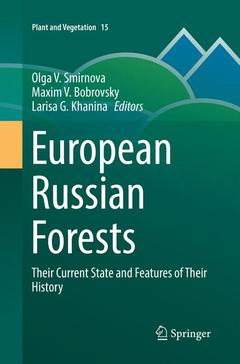Description
European Russian Forests, 1st ed. 2017
Their Current State and Features of Their History
Plant and Vegetation Series, Vol. 15
Language: English
Subjects for European Russian Forests:
Publication date: 12-2018
Support: Print on demand
Publication date: 05-2018
Support: Print on demand
Description
/li>Contents
/li>Comment
/li>
The European Russian forests are described within the boreal, hemiboreal and nemoral forest regions; floodplain forests are also characterized. The book presents a classification and description of forest vegetation, soil characteristic and assessments of plant diversity and successional status of forest plant communities. Structure and composition of vegetation in early- and late-successional forests are analyzed with an emphasis on forests in State Nature reserves. Features of the historical land-use, such as slash-and-burn, forest cutting, grazing, influence of fires on forest ecosystems, etc. are discussed for each forest region. The book contains an analysis of the general dynamics of the forest cover during the last two decades based on satellite image processing. The main stages of transformation of forest landscapes in European Russia during the Holocene are briefly reviewed in connection with the development of the production economy of people.
A unique opportunity to learn in detail about the European Russian forests in English
Special sections per climatic forest region on features of the historical land-use with unique photos
Includes about 100 color photos of vegetation and soil in European Russian forests with mosaics of gaps, fallen trees, pits and mounds caused by treefalls with uprooting




